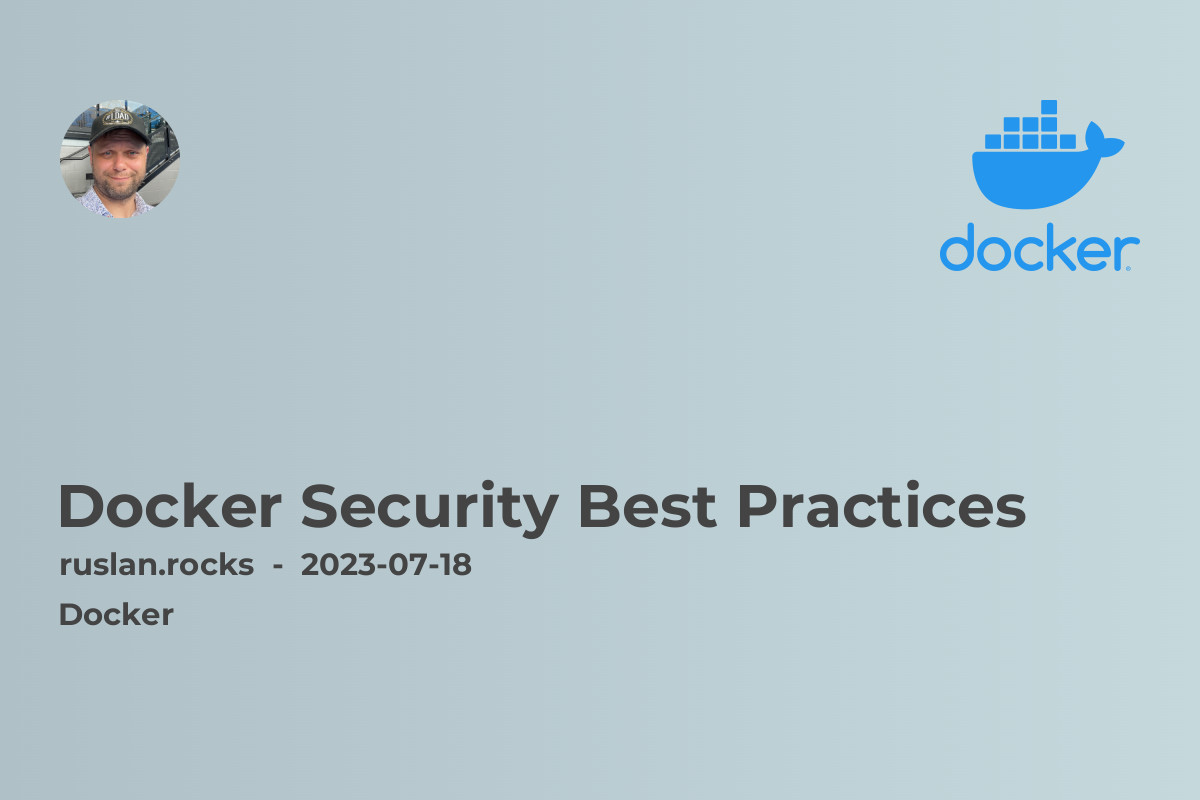
Containerization has revolutionized the way applications are built and deployed, providing a lightweight and scalable solution for software development. Docker, the leading container platform, offers numerous benefits, but it's crucial to prioritize security to protect your applications and data. In this article, we will explore Docker security best practices to ensure the safety of your containers.
Understanding Docker Security
Docker provides a secure environment by leveraging several built-in features. However, it's important to understand that Docker security is a shared responsibility. While Docker takes care of securing the container runtime, it's up to the users to implement security measures at the application level.
Proper Image Management
The first step in ensuring Docker security is to use only trusted images from reputable sources. Regularly update the base images used in your containers to incorporate the latest security patches. Avoid downloading images from questionable or unofficial repositories, as they may contain malicious code.
Container Isolation
Docker containers are designed to be isolated from one another and the host system. Enforce strong isolation by running containers with restricted privileges using Docker's --cap-drop and --cap-add options. This prevents potential privilege escalation attacks.
Resource Constraints
Docker allows you to limit the resources available to containers, such as CPU and memory usage. By setting resource constraints, you can prevent resource exhaustion attacks and ensure fair allocation of resources among containers.
Network Security
Containerized applications often communicate with each other and the outside world through networks. Secure your Docker network by utilizing network segmentation techniques, such as creating separate network bridges for different container groups. Additionally, consider enforcing network-level access controls and encrypting network traffic to protect sensitive data.
Regular Patching and Updates
Stay on top of security vulnerabilities by regularly updating your Docker software and container images. Docker frequently releases updates that address security issues, so it's crucial to keep your environment up to date. Monitor security advisories and promptly apply patches to ensure your containers are not at risk.
Best Practices for Docker Security
Now that we have covered the fundamentals of Docker security, let's delve into some best practices to enhance the security of your containers further.
Minimize Attack Surface
Reducing the attack surface of your containers is vital in securing your Docker environment. Start by creating minimalistic container images based on lightweight base images like Alpine Linux. Only include the necessary software and dependencies required for your application to avoid unnecessary exposure to potential vulnerabilities.
Implement User Privileges
By default, Docker containers run with root privileges inside the container. This can pose a significant security risk if an attacker manages to compromise a container. To mitigate this risk, it is recommended to run containers with non-root users whenever possible. Create a dedicated user for your container and run processes with reduced privileges.
Enable Content Trust
Docker Content Trust can help prevent the compromise of container images by enabling digital signatures and verification. With Docker Content Trust enabled, Docker only allows the use of signed images, providing an additional layer of security against unauthorized or malicious image changes. Enable Docker Content Trust using the DOCKER_CONTENT_TRUST environment variable or the --content-trust flag.
Secure Container Registry
Your container registry plays a crucial role in maintaining the security of your Docker images. Ensure that your registry is adequately protected by using authentication mechanisms, such as username and password or token-based authentication. Consider using a private registry to have full control over your images and limit access to authorized users.
Logging and Monitoring
Effective logging and monitoring are essential for detecting and responding to security incidents. Enable Docker container logging to capture events and activities within your containers. Additionally, use a centralized logging solution to aggregate and analyze logs for better visibility. Implement monitoring and alerting mechanisms to quickly identify any suspicious activities or unauthorized access attempts.
Related Topics
To further explore Docker and containerization, consider reading the following articles:
- What Is Docker: Gain a comprehensive understanding of Docker and its core concepts.
- Docker vs Virtual Machine: Which is the Better Choice?: Compare Docker containers with traditional virtual machine (VM) approaches.
- Docker Networking: How to Connect Containers: Learn about different networking options and techniques in Docker.
- Dockerfile Copy: Managing File Operations: Understand how to handle file operations in Dockerfile.
- Private Docker Registry: A Secure Solution for Container Management: Explore the benefits of using a private Docker registry for better control over your container images.
By following these Docker security best practices and staying informed about the latest security trends, you can protect your containerized applications from potential threats. Remember, a proactive approach to Docker security is vital to safeguard your data and maintain the integrity of your systems.
